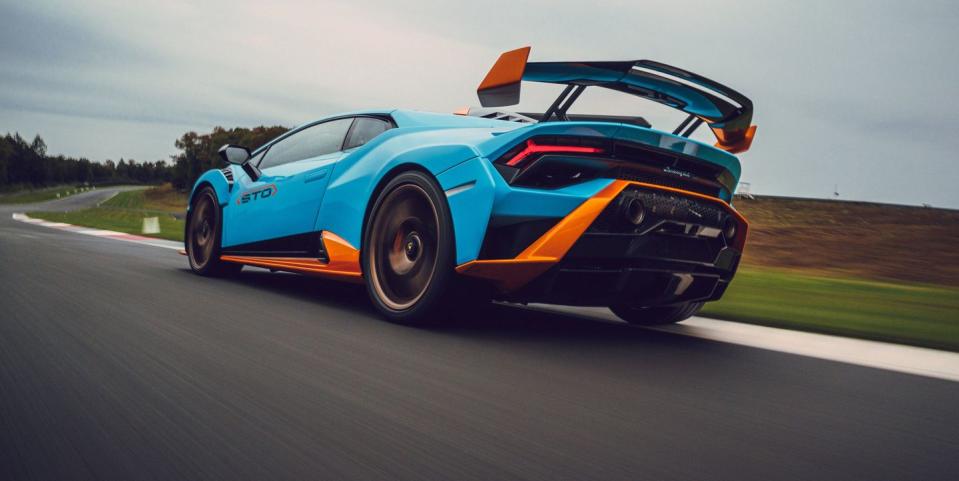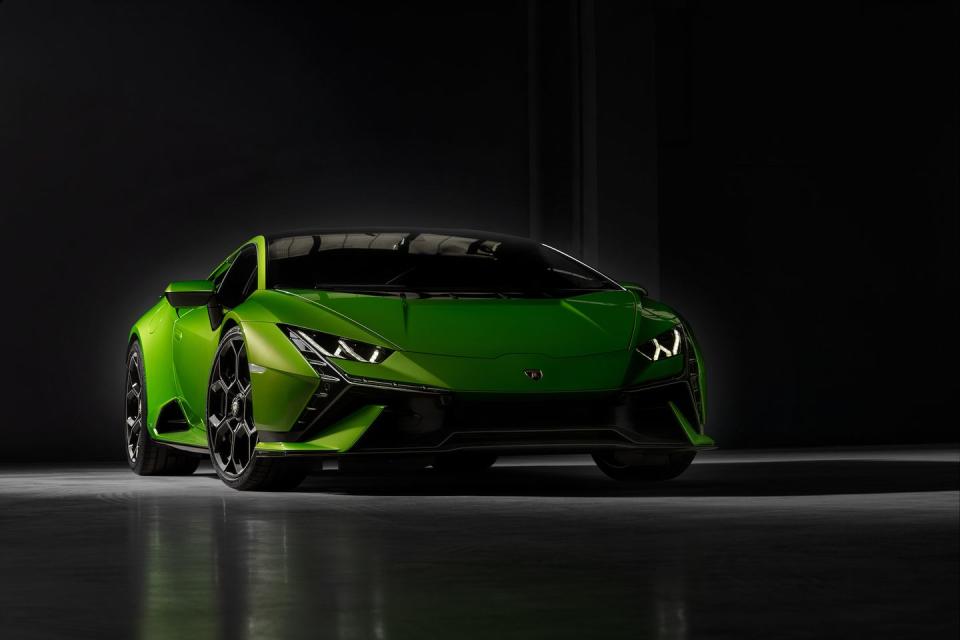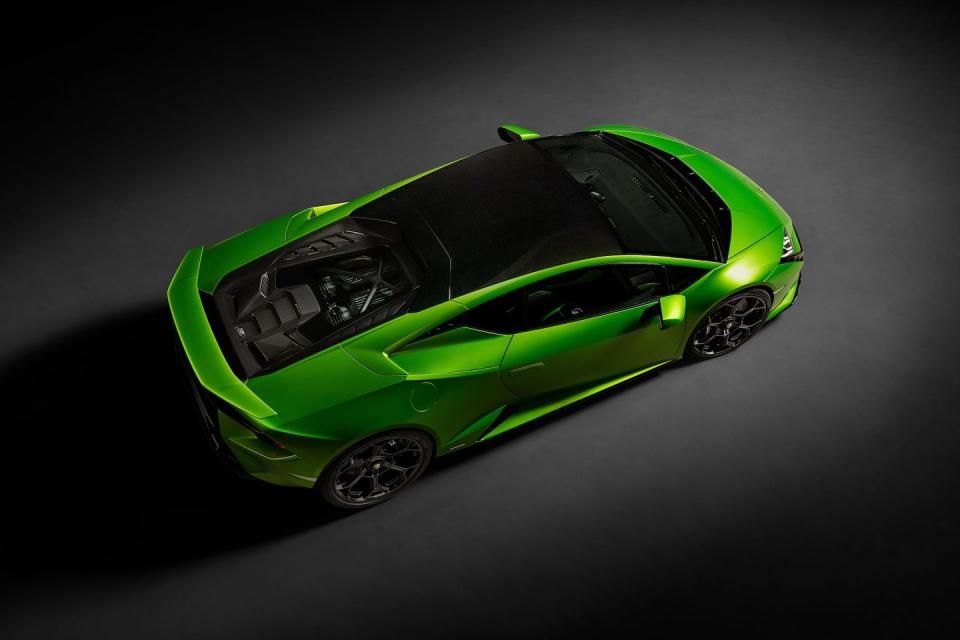Why Lamborghini's Newest Track Cars Are Rear-Wheel Drive

As the first all-wheel drive Lamborghini, the Diablo VT of 1993 was a groundbreaker. Not only did the addition of a viscous center coupling give the car a new name—VT stands for viscous traction—it fundamentally altered the driving experience. With four driven wheels, the Diablo VT made managing 492 hp in a mid-engine supercar easy. The Diablo's successor, the Murcielago, was only available with four driven wheels, and rear-drive versions of Lamborghini's entry-level Gallardo were only offered in limited numbers towards the end of that car's life, and with lower horsepower.
Very recently, though, Lamborghini has started pushing rear-wheel drive to the forefront again. First with the wild and excellent Huracan STO, and again with the Tecnica, both of which share a 640-hp V-10 and only two driven wheels. "Fifty years ago, a car like this, you would be scared to drive at the upper limit," says Rouven Mohr, Lamborghini's new CTO, in an interview with Road & Track.
We haven't driven the Tecnica yet, as it only just made its debut, but the STO is easy. And to Mohr's point, the only 600-plus-hp mid-engine cars available fifty years ago made up the sharp end of Le Mans grids and Can-Am grids. A 917, these Lamborghinis are not, and that's a good thing.

"We still say that if you have a really high-power car and you want to be fast in all conditions, four-wheel drive is the best for sure," Mohr says. "If you want to have a track car to enjoy, also that feels extremely agile, one you can play with, rear-wheel drive has an advantage. Also from the weight perspective, rear-wheel drive has an advantage. Therefore, we decided to go with two-wheel drive in the STO, both for the technical reasons that I mentioned, and also because customers appreciate having rear-wheel drive cars."
It's a contrast to previous track-focused Lamborghinis like the Gallardo Superleggera and Huracan Performante. It reflects shifting tastes, and new technologies.
"Today with all the control systems, all the active systems, it's easier really to give a car to the customer that is easy to handle and to control," Mohr says. Fifteen-twenty years ago, it was not possible."

For Lamborghini, one of the big steps forward came with its Lamborghini Dinamica Veicolo Integrata (LDVI) system, which debuted with the Huracan Evo. LDVI is, essentially, a central brain that talks to all of the car's different systems—engine, gearbox, ABS, rear-wheel steering, differential, dampers, traction/stability control, and if applicable, all-wheel drive. The idea is that you can have a positive impact on vehicle handling by getting all these different parts working with each other. Instead of chomping on a brake to increase traction, you might want to decrease engine torque, or actuate the differential. The system can be almost proactive instead of reactive. Mohr cites an example where when the car thinks the driver is about to hit the brakes, the damper settings will change front-to-rear to promote a bit more weight transfer, and thus, sharper turn in.

 Yahoo Autos
Yahoo Autos 